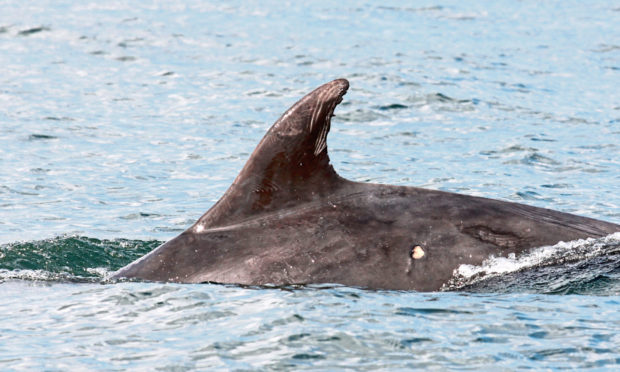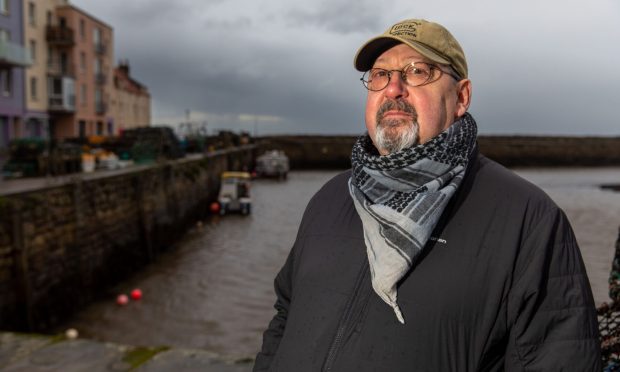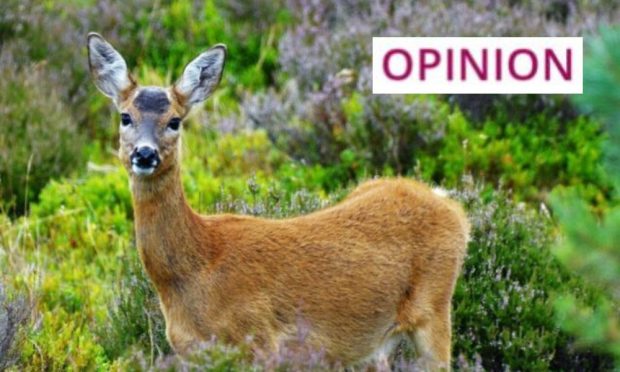Researchers are hoping to spot a dolphin that has returned to Scottish waters for more than 30 years, as part of a long-running project to monitor the animals.
The bottlenose dolphin, named Singers, was the first animal recorded when surveys of Scotland’s east coast population began in 1989.
The animal, which is identified by scars and other markings on its dorsal fin, has been seen every year since. Thought to be a male, researchers say Singers could be around 40 years old now and hold vital clues as to the health and longevity of animals in the population.
Professor Phil Hammond, of the Sea Mammal Research Unit at St Andrews, said: “Singers is a bit of a star because he was seen in the first year of the project and is number one in our catalogue.
“We think he is a male because we’ve never seen him with a calf, and because he is a very large animal with a very scarred dorsal fin. He was already mature when we first saw him, so was probably at least 10 years old at that time.
“We were still seeing him last year, so he’d probably be at least 40 years old now. We know they can live at least 60 years, so we are very hopeful of seeing him again.”
The bottlenose dolphin project is conducted by researchers at the Sea Mammal Research Unit based at St Andrews and Aberdeen universities. Now in its 32nd year, it is one of the longest running projects of its kind in the world.
Surveys usually run from May to September, but the 2020 programme only resumed last week after a delay caused by the coronavirus pandemic.
Researchers spotted some dolphins last week in the Tay Estuary near Tayport and between Crail and Anstruther.
Individuals are told apart by nicks or notches on their dorsal fins, often caused by fights. The unique markings allow the team to document individuals’ movements and also offer clues on survival, birth rates and trends in population.
Singers has been seen throughout the Moray Firth and in St Andrews Bay in the past.
The Moray Firth Special Area of Conservation is home to the most northern resident bottlenose dolphin population in the world. Recognised as a major tourist attraction along Scotland’s north-east coast, the dolphins are thought to generate around £4 million per year for the local economy.
Recent years have seen an increase in sightings of the same animals in the Firth of Forth and even as far south as the north-east English coast.
New research to investigate this latest range expansion is being initiated this year.









